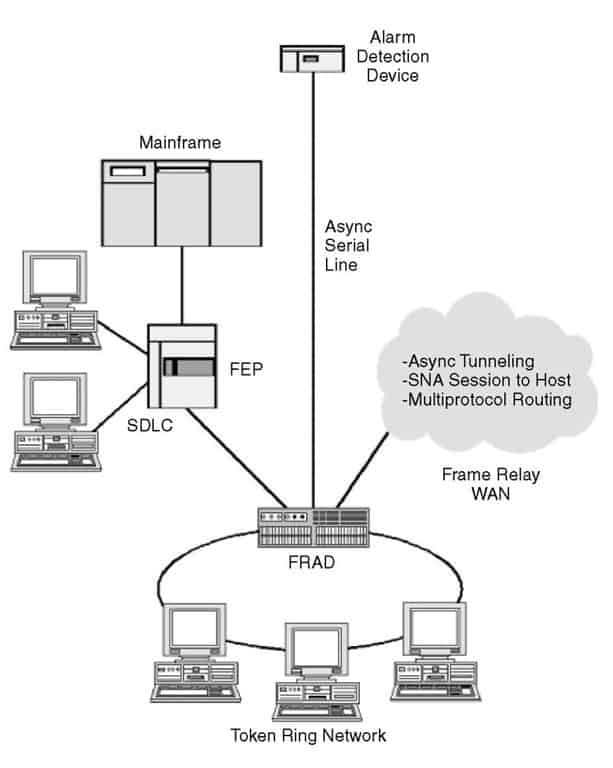Definition of Frame Relay Access Device (FRAD) in The Network Encyclopedia.
What is FRAD (Frame Relay Access Device)?
Sometimes called a frame relay assembler/disassembler, FRAD is a telecommunications device that enables a customer site to be connected to a frame relay service.
How It Works
The frame relay access device (FRAD) is a device that receives network packets from the customer’s network and encapsulates them into a format acceptable for transmission over frame relay circuits. A local FRAD accepts packets from a bridge, router, or other device; buffers them; frames them; and transmits them over a frame relay link to a remote FRAD that performs the process in reverse. Special bridges and routers can include built-in FRAD circuitry for directly connecting customer networks to a frame relay service.

The FRAD also includes technology for statistically multiplexing large numbers of virtual circuits (logical data streams) over a single physical communication link. This enables the FRAD to provide the customer with greater flexibility in bandwidth use, in contrast to time-division multiplexing (TDM) techniques, which ensure a full level of service for each data stream, even when they carry no data.
For example, if two data streams are multiplexed using TDM, frames from the two streams will alternate to form the single serial data link. If one of these streams has no data, empty frames will still be sent, resulting in a poor utilization of bandwidth. In statistical multiplexing, the multiplexed data stream contains only frames from data streams that are carrying data, and the higher the data transmission rate of a stream, the greater the number of frames that are multiplexed into the serial data link.
Built-in FRAD technology
Some bridges and routers, such as many of those from Cisco, have built-in FRAD technology and need to be connected only to a CSU/DSU (Channel Service Unit/Data Service Unit) through a V.35 or other serial transmission cable to provide customers with an all-in-one frame relay access solution for wide-area networking. Use a bridge if you want an easy way to connect a branch office using frame relay. Use a router if you want to control traffic flow or reroute failed connections.